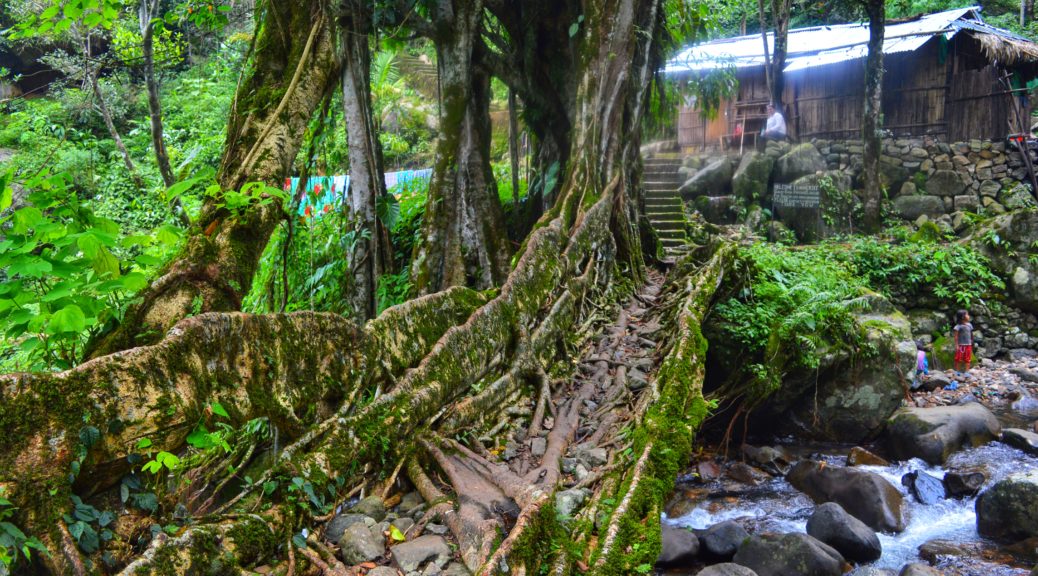
Living Root Bridges of Meghalaya
Dating back many centuries, when the fast flowing streams of Meghalaya have cut an entire village from the mainland, the Khasi tribes who had an intimate relationship with nature has figured an indigenous way to solve the issue.
As the monsoon sets in, the same rain which turns the whole valley into a visually pleasing emerald green, also causes flood in many regions of Meghalaya which leads to isolation of villages from mainland. Such is the case in Meghalaya, where instead of building concrete bridges to cross over, long ago the tribes have found a traditional way to live in harmony with nature.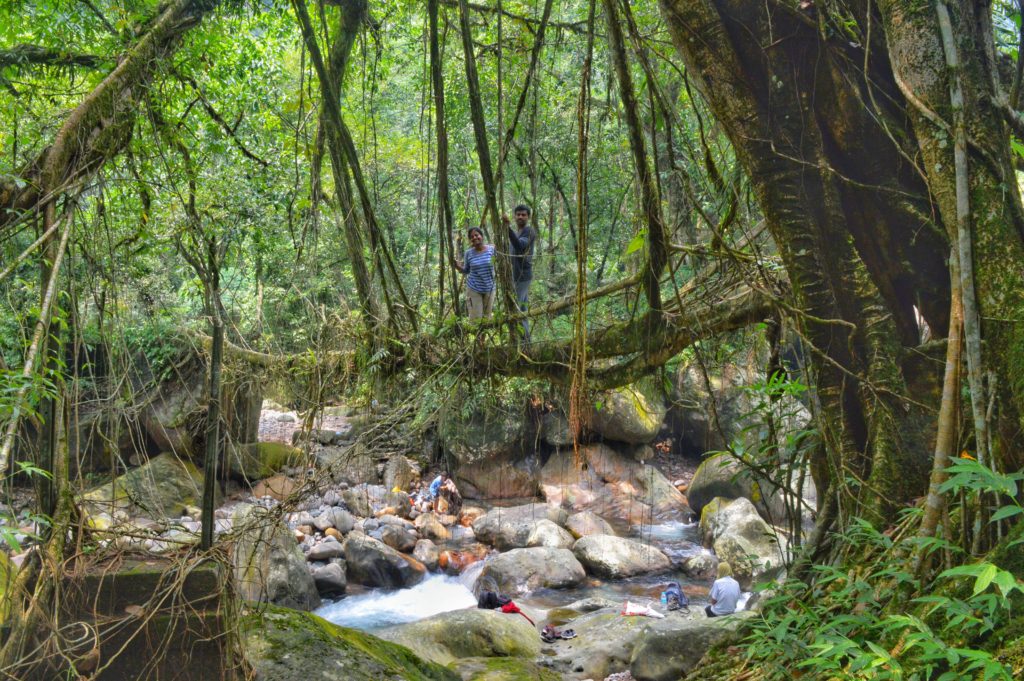
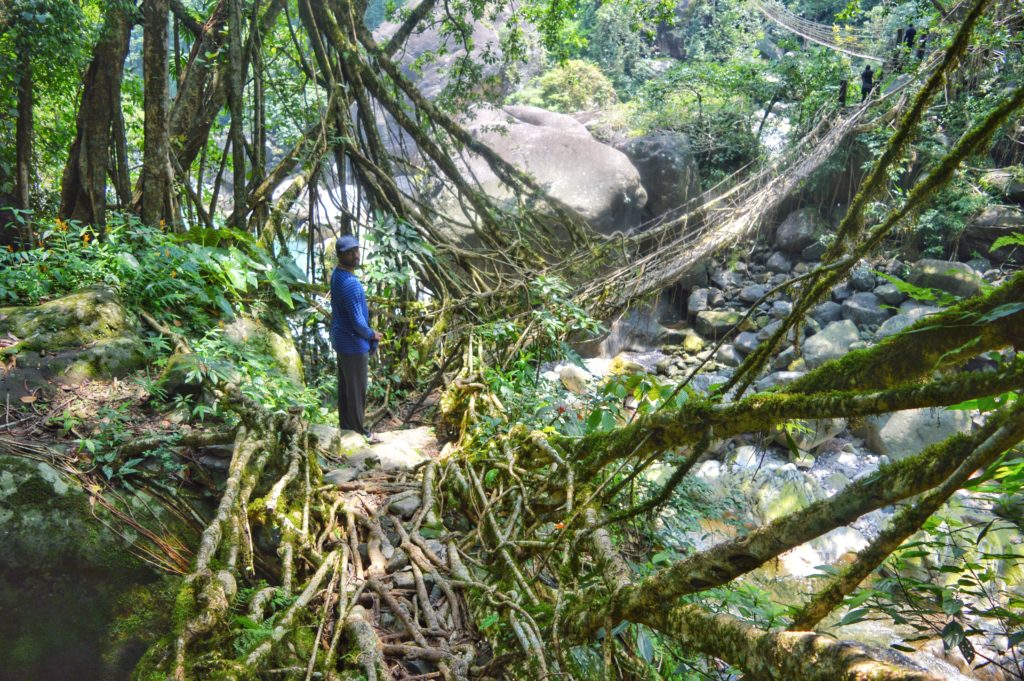
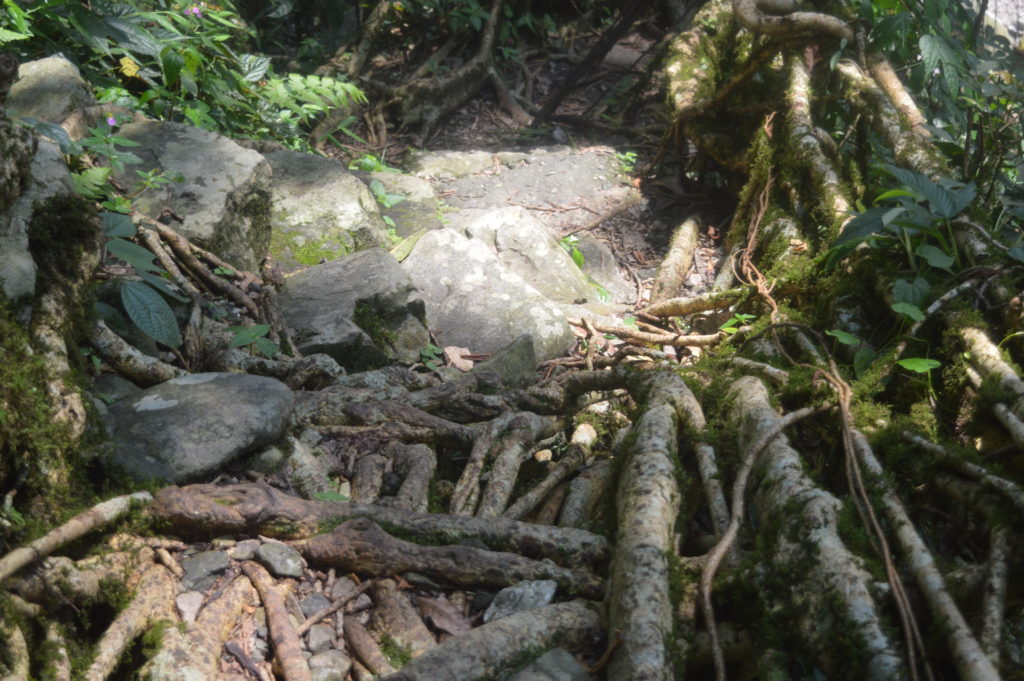
The entire process takes ten to fifteen years to establish a functional root bridge. In contrast to the man-made bridges, these living root bridges get stronger with time. Many of the living root bridges can hold over 50 people at a time.
Where you can find living root bridges in Meghalaya?
Nongriat
A tiny Khasi tribe hamlet tucked away in the mountian valleys down 3000 steps beneath dense forest cover, is home to various root bridges of Meghalaya.
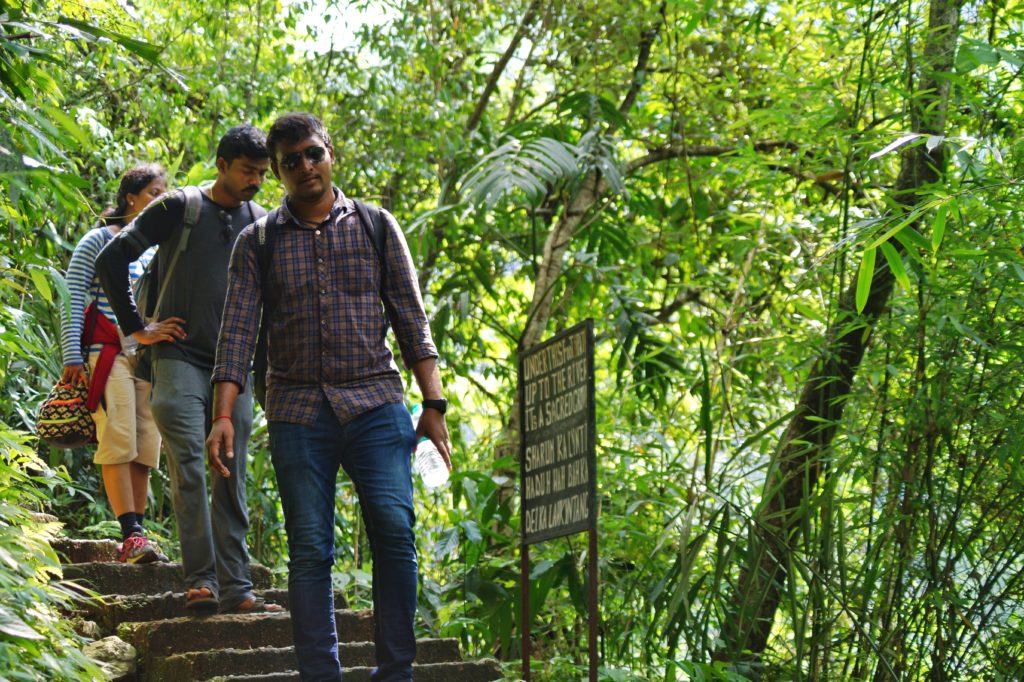
You may have to trek down steep steps to the valley and then up a hill to finally reach Nongriat. Trek to Nongriat village starts at Tyrna where there are local guides available to hire if you want.
1) Ritymmen root bridge
While trekking your way to double decker root bridge, upon reaching Nongthymmai, you would come across a direction board onto your left with words ”Longest Root Bridge” hung on the bark of a tree.
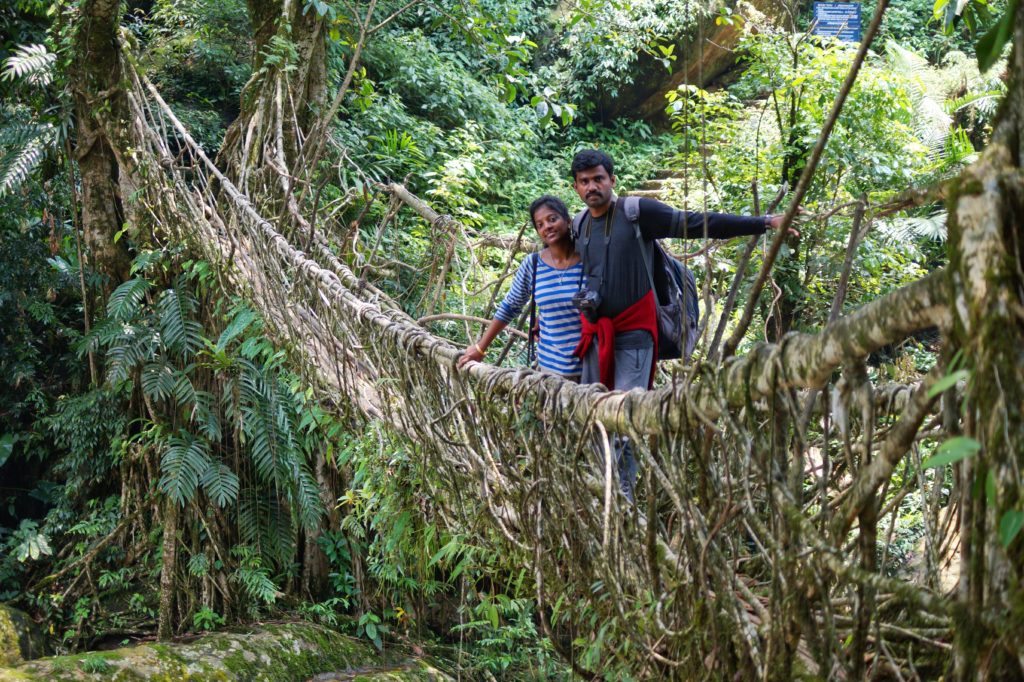
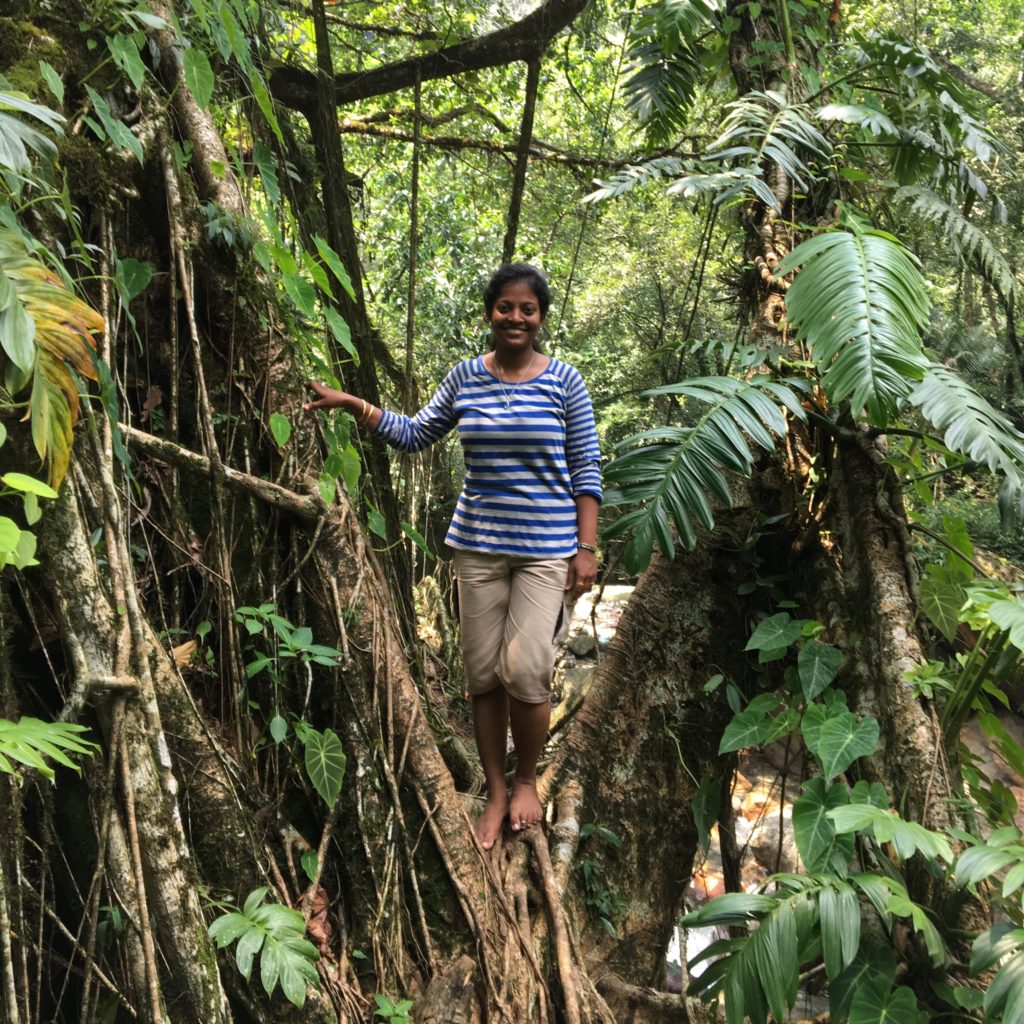
This 250 year old root bridge requires no introduction, as it is one of the famous root bridges of Meghalaya. Doesn’t this place look straight out of a fairy tale?
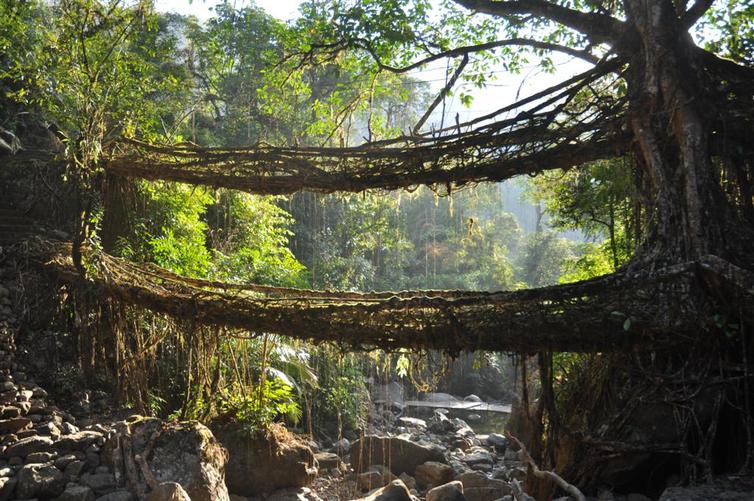
The second level of the bridge is constructed when the first level became inoperable due to excessive rains. Do you know that the people of Nongriat are planning to add third level to the bridge which would be functional in another ten years?
3) Mawsaw root bridge
Mawsaw root bridge, on the way to rainbow falls is two hours away from double decker root bridge. After crossing a suspension bridge, you would come across this bridge. This is actually a semi natural bridge as it has some steel cables interwined with them for support.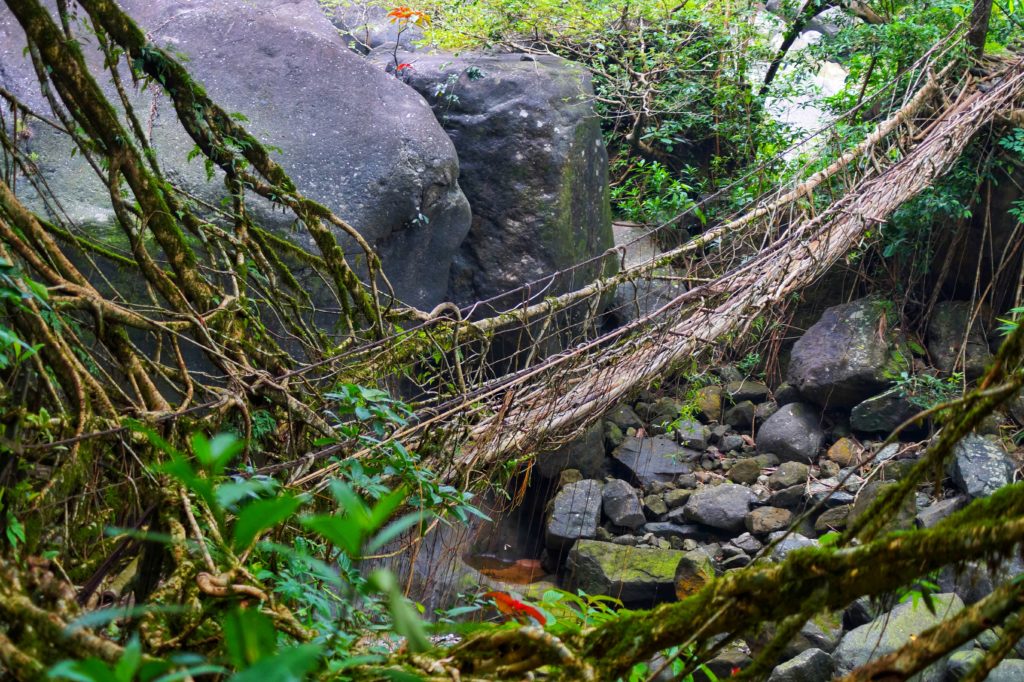
This bridge in Siej village is basically an under construction bridge. In 2011, a massive flood has washed away a part of the 40 year old Umkar living root bridge. Now the villagers are rebuilding it and it would take another ten to fifteen years to go functional.

As it is still growing, you cannot walk till the end. The root bridge is accessible after a short 10 minute hike from Siej village.
Mawlynnong
A magical paradise 80 km from Cherrapunjee, is home to the tribes of Khasi hills. From cleanliness to greenery, the villagers take extreme effort in maintaining. While adults go sweeping the streets of their village, children go about picking plastics, wrappers with pride.
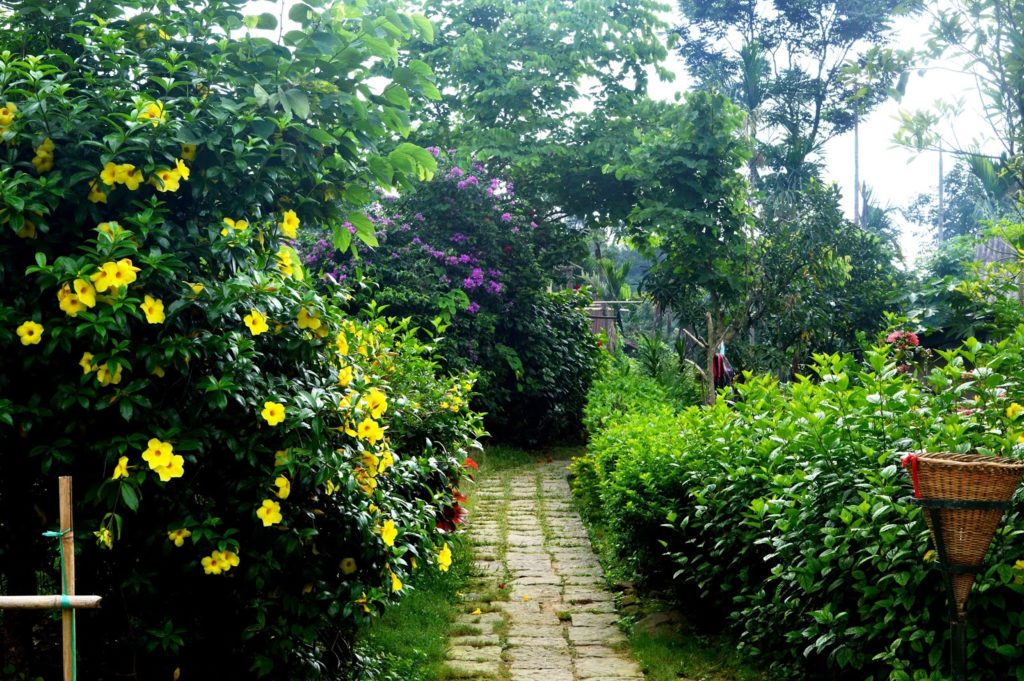
1) Riwai root bridges
The cleanest village of Asia, Mawlynnong has also got a root bridge. We didn’t have time to go to this root bridge. But we heard that these root bridges are easy on legs and is a perfect alternative to root bridges of Nongriat if you don’t want to go on a tedious trek.
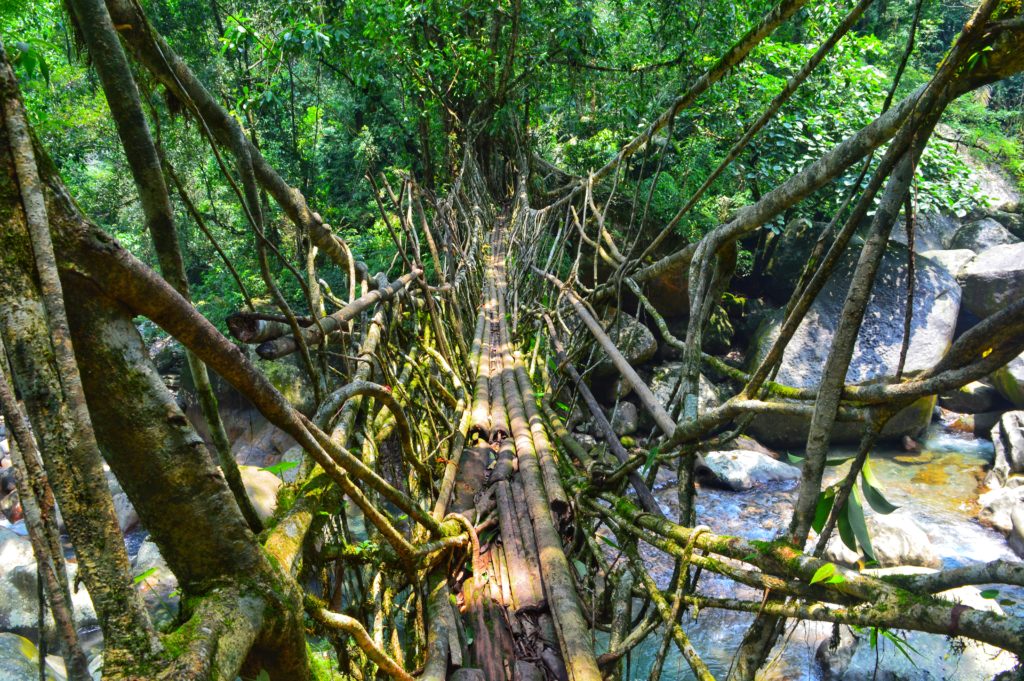
Though there are many unexplored root bridges tucked down the hills, these are the popular options to experience the root bridges of Meghalaya.
While the whole world has been boasting about it’s technology development, there is a community in the north eastern part of India, far from the reach of media, who outreached the advancement in technology just by being coherent with nature.
https://www.instagram.com/p/Bt5_vISF0tM/?hl=en
This man-made wonder is unquestionably worth experiencing if you are planning a visit to Meghalaya.
How can you miss out on a 250 year old Bio-Engineering marvel that the indigenous Khasi tribes had invented and used for centuries to cross the swollen river?
While the technology is advancing in other direction than intended, I was so happy with the Eco-technology our ancestors have used in their everyday life.
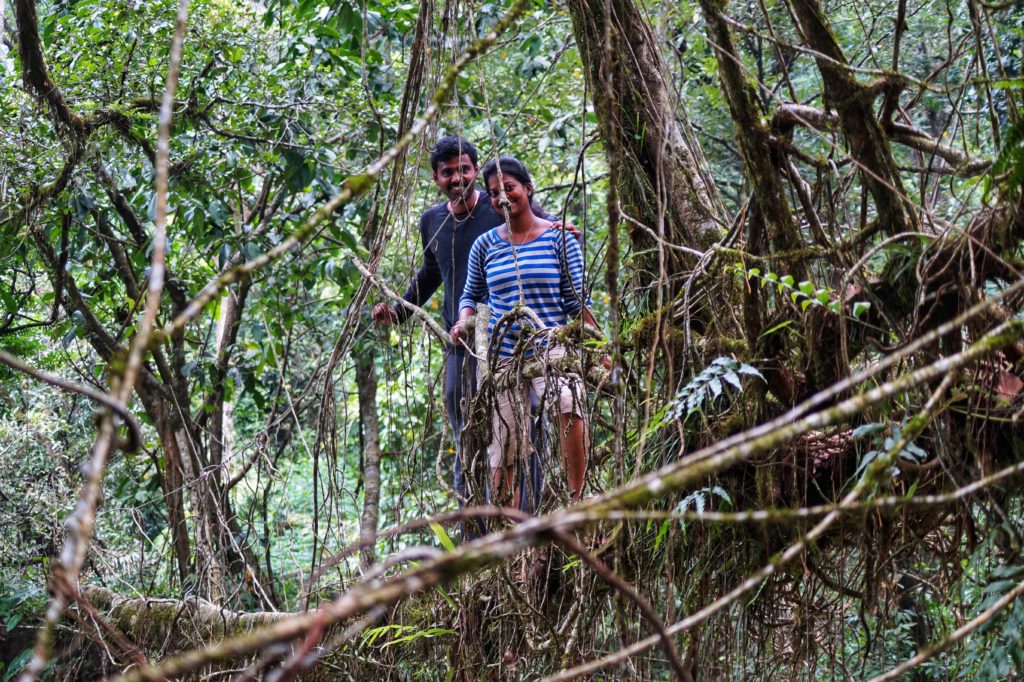

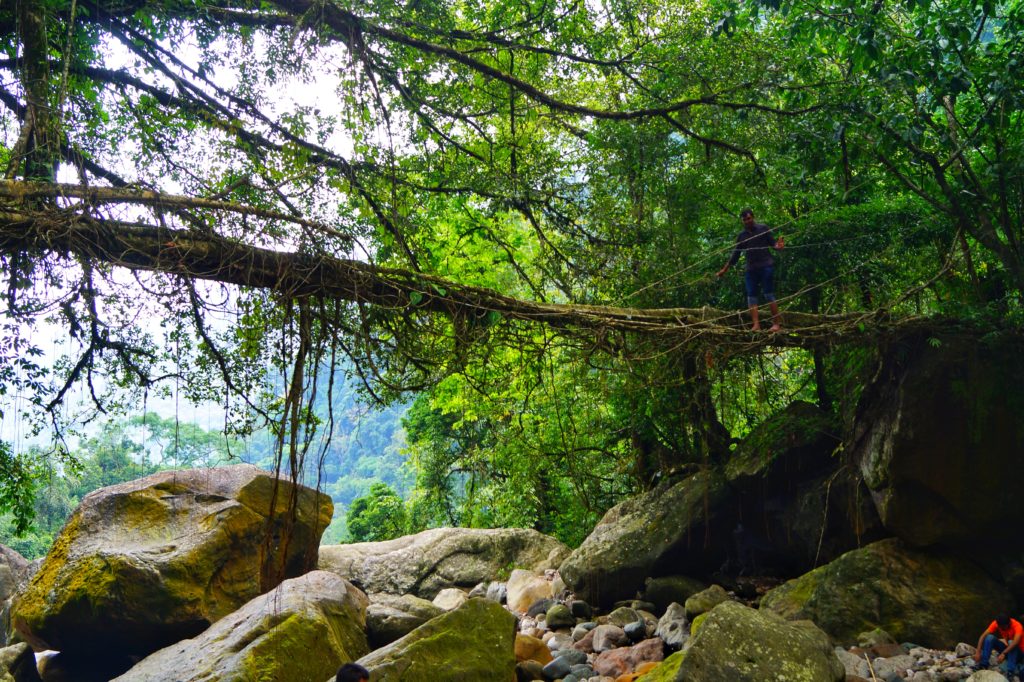
3 thoughts on “Living Root Bridges of Meghalaya”
This is some writing ✍️ 👍 Well planned and thought-out.
Pictures are mind boggling 🤩 Keep it up 😊
Super 👌
Thanks a lot prem😊😊